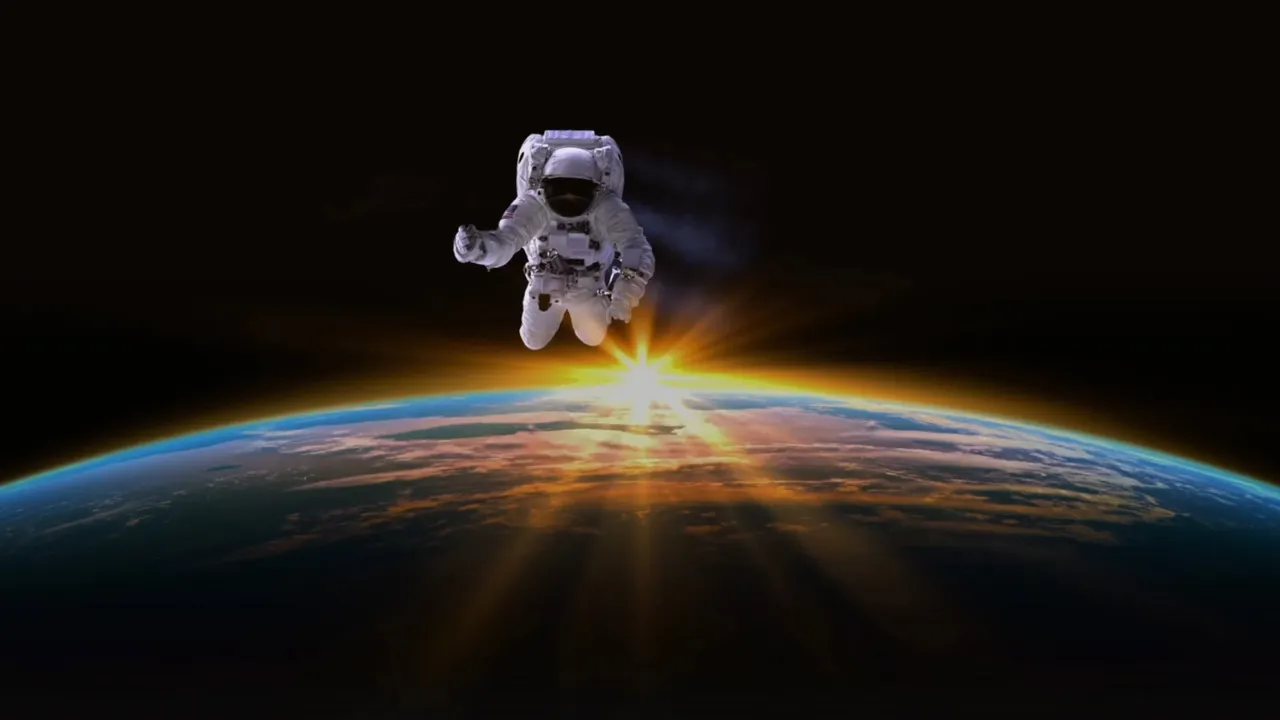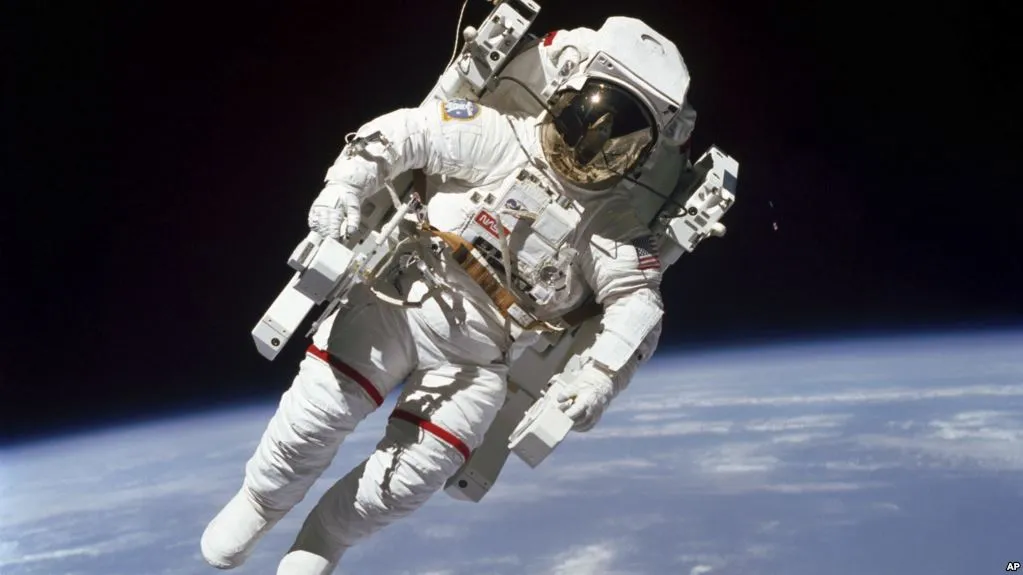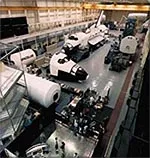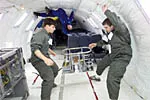Explore . Dream . Discover
-Mark Twain
Today's era is revolving into a new discoveries and exploration. As we look up on the sky, we may be wondering how we were able to decipher the world's mysteries when it comes to the outside preferences. We are solely dependent from what we were able to read and hear from news or bulletins about what is in the world and how does it go round and round around its orbital path. It is more amazing to know that there are certain people that are able to get the first hand information by being the one who are tasks to be in an unexpected place - the SPACE.

I am personally fond of reading science fiction books and watching sci-fi movies or series. With this, I was able to dream working as a space scientist when I had my primary years. YES! It was the wildest dream I ever had and I never regretted it since it has cultivated my curiosity about the world and beyond.
Allow me to begin my blog by defining and/or discussing what astronauts and cosmonauts are. Also their differences though they just differ in a small detail.
The Space People :: ASTRONAUTS or COSMONAUTS

Astronauts or Cosmonauts are people who undergone special training that specializes on the daily routine and tasks being outside the world or on space. They are trained on how to manipulate the spacecraft, utilize the appropriate suits, machines and materials. They are also trained on the lifestyle they are going to undertake during their space missions.
Astronauts VS. Cosmonauts
Some of you may be wondering what's the difference between the two. Let us discover it together.
Astronauts referred to English people who are trained for the space expeditions. astro is a Greek word means "star" and naut means "sailor". Hence, the word astronauts literally means star sailor
Cosmonauts referred to Russian people who are trained for the space expeditions. cosmo is a Greek word means "universe" and naut means "sailor". Hence, the word astronauts literally means universe-sailor
Hence, there is no big difference between the two since they only differ on the word etymology but they don't differ technically.
Astronauts' Training
Being counted as an astronaut-on-mission, you have to undergo a combat series of training. Some of the trainings can take 2 years and more depends on the mission you are in. Yet, these are the generic training anyone should undergo
On Space Vehicle Mock-Up Facility

On this training, the trainee will be exposed on the "mock-up" facilities. Mock-up facilities are the life-sized area where they can uncover what-it-might-feel-like being on the actual mission. They will be trained in an area that is identical with the ISS (International Space Station) and Space Shuttle orbiter.
KC-135

This plane is also known as the Weightless Wonder or Vomit Comet. It provides about 20-25 seconds of zero gravity. For this brief amount of time, astronauts feel weightless. Sometimes, even experienced astronauts get sick in the KC-135. That is where it gets one of its names.
On Earth, brief periods of microgravity can be achieved by dropping materials/objects from a tall buildings. Microgravity, however, can be achieved by the use of airplanes that fly special flight paths. The microgravity research aircraft of the National Aeronautics and Space Administration (NASA) is the KC-135, a four-engine turbojet, which has been modified to meet NASA's needs to train astronauts and conduct microgravity research. The KC-135 is part of the space agency's Reduced Gravity Program, which was started in 1959 to expose people and equipment to microgravity. The program is operated from the Lyndon B. Johnson Space Center in Houston where scheduling, test coordination, and in-flight direction of test programs takes place.
The Precision Air-Bearing Floor

One of the tasks of an astronaut that they must be independent of is moving large objects in space. It is an easy job knowing that there will be no friction that will go against of the force exerted, however, with no friction then it will be harder to make anything stop. With this, a person may find it difficult to put things up and just float and float.
The Precision Air-Bearing Floor allows astronauts to move huge objects as they might in space. It is a large, smooth metal floor. The large objects have air forced through them. It is like a large air hockey table.
The Neutral Buoyancy Laboratory

To practice extravehicular activities, or space walks, astronauts go underwater. The astronauts use the Neutral Buoyancy Laboratory (NBL), a huge "swimming pool." The NBL pool is 62 meters (202 feet) in length, 31 meters (102 feet) in width and 12 meters (40 feet) in depth. The pool holds 22.7 million liters (6.2 million gallons) of water.
Astronauts float in the water while they practice on full-sized models of space vehicles. They may spend up to seven hours at a time under water. If you were able to watch the "Armageddon", there was a part on it that they are trained underwater while they are manipulating an object.
Amazing Facts and Fun Facts about these Space People

In 2017, more than 18,000 people applied to join Nasa’s astronaut class. That’s almost three times the number of applications that were received in 2012
Astronauts spend hours learning to read and speak Russian. Spoken fluency is necessary for safety reasons, and passing a competency test is a requirement for NASA.
Sneezing in a space suit is a delicate matter. Astronauts have to lean their heads forward and sneeze into their chests to prevent it from splattering all over their visor.
Astronauts in space can’t tell when their bladders are full, because urine does not collect at the bottom of the bladder in a low-gravity environment. Normally, the bladder would signal the need to go at 1/3 full, but in space, it’s only triggered at almost full, which can cause problems. As a precautionary measure, Astronauts are trained to relieve themselves every two hours.
if an Astronaut cries, the tears do not fall, they just stay on their face and form a blob around their eyes. The surface tension of the water holds it together for the most part.
Astronauts sleep in bunk beds or in sleeping bags. However, these bunk beds must be fitted with buckles so the astronauts can buckle up. Otherwise, they might float around the spacecraft while sleeping.
There is no wind or rain in space so an astronaut’s footprints on the Moon will remain for at least a million years.
In 1971, the US left a memorial on the Moon for every astronaut who died in the pursuit of space exploration, including Russian Cosmonauts.
Sergei Kirkalyov, cosmonaut from the Soviet Union, has spent the most time in space. He was aboard the space station for 2 years and 73 days
An Astronaut can be up to 2 inches taller returning from space. The cartilage disks in the spine expand in the absence of gravity.
As of 2016, there have been 18 astronaut and cosmonaut fatalities during spaceflight.
Astronaut John Glenn became the oldest person in space at 77 after “lobbying NASA for two years to fly as a human guinea pig for geriatric studies”
Low gravity makes it difficult to tell if your bladder is full because the bladder’s stretch receptor nerves don’t feel the weight of the liquid. Astronauts are trained to empty their bladders every two hours because of this.
The astronauts of Apollo 11 couldn’t get life insurance, so they signed photos that their families could auction in case the landing went wrong.
Buzz Aldrin who is the second man to land in the moon is also the first man to pee on the moon.
As per source, there are only 12 man who landed on the moon
Frequently Asked Questions about Space People

The following questions are common for students wondering about this profession and were answered by astronauts.
What kind of food do you eat?
Answer : We don’t want food that makes crumbs in space since crumbs would float all over the place and that could clog up equipment! Peanut butter, in fact, is the nearly perfect space food. It has no crumbs and almost everyone loves peanut butter. We can bring fresh foods with us, as long as we eat them early in the mission before they spoil.How do you go to the bathroom in space?
Answer : The space potty is a little different than the Earth potty. First of all, to keep from floating away, you must use foot-loops or straps while ‘sitting’ on the seat. This holds you on to the seat, sort of like a seat belt. Secondly, the space potty uses suction, not water, to ‘flush.’What do you do if you get sick in space?
Answer : We carry first aid kits and some special medical equipment into space with us. We also are trained to take care of most minor and some major medical problems. There is not a doctor on most flights, but all crew members are trained in basic first aid and CPR. We can talk to doctors on the ground if we need help. If someone gets very sick in space, we can make an emergency trip back to EarthWhat do you do on the International Space Station (ISS)?
Answer : Astronauts and cosmonauts on the space station stay busy. There’s lots of work to operate the many science experiments on board. The crew also has to make sure that the station is in top shape, so they clean, check equipment, maintain and repair or replace broken equipment. Crew members also must exercise two hours each day to stay fit and keep their bones and muscles strong. Sometimes we need to do a spacewalk to work outside the station in our space suit. It’s a tough and dangerous job but the view is terrific. The extra-vehicular activities, or EVAs, help keep the space station running.What effects does space flight have on your body?
Answer : A ‘normal’ body will adapt to the ‘abnormal’ environment of space in many ways. Immediately upon entering zero gravity, fluids in your legs and the lower part of your body move upwards towards your head. In fact, your face will feel and look swollen. Except for the occasional headache and congestion, astronauts aren’t bothered by this fluid shift. Some astronauts feel dizzy and have an upset stomach during the first few days of a space flight as they get used to zero gravity. This feeling usually goes away after three or four days. After a few days almost everyone is used to zero gravity and feels great. If you don’t exercise, your bones and muscles will get weak. Upon return to Earth, you must get used to gravity again. Sometimes this makes you feel dizzy or queasy. If you are returning from a two week flight, readjusting might take a day or two. If you are returning from a six month flight, it may take several weeks to feel ‘normal’ again.
This is a science related topic, hence, sources are needed.
SOURCES:
NASA
Etymologies
KC 135
Trainings
FAQs]
Source 1
Source 2
Source 3
Source 4